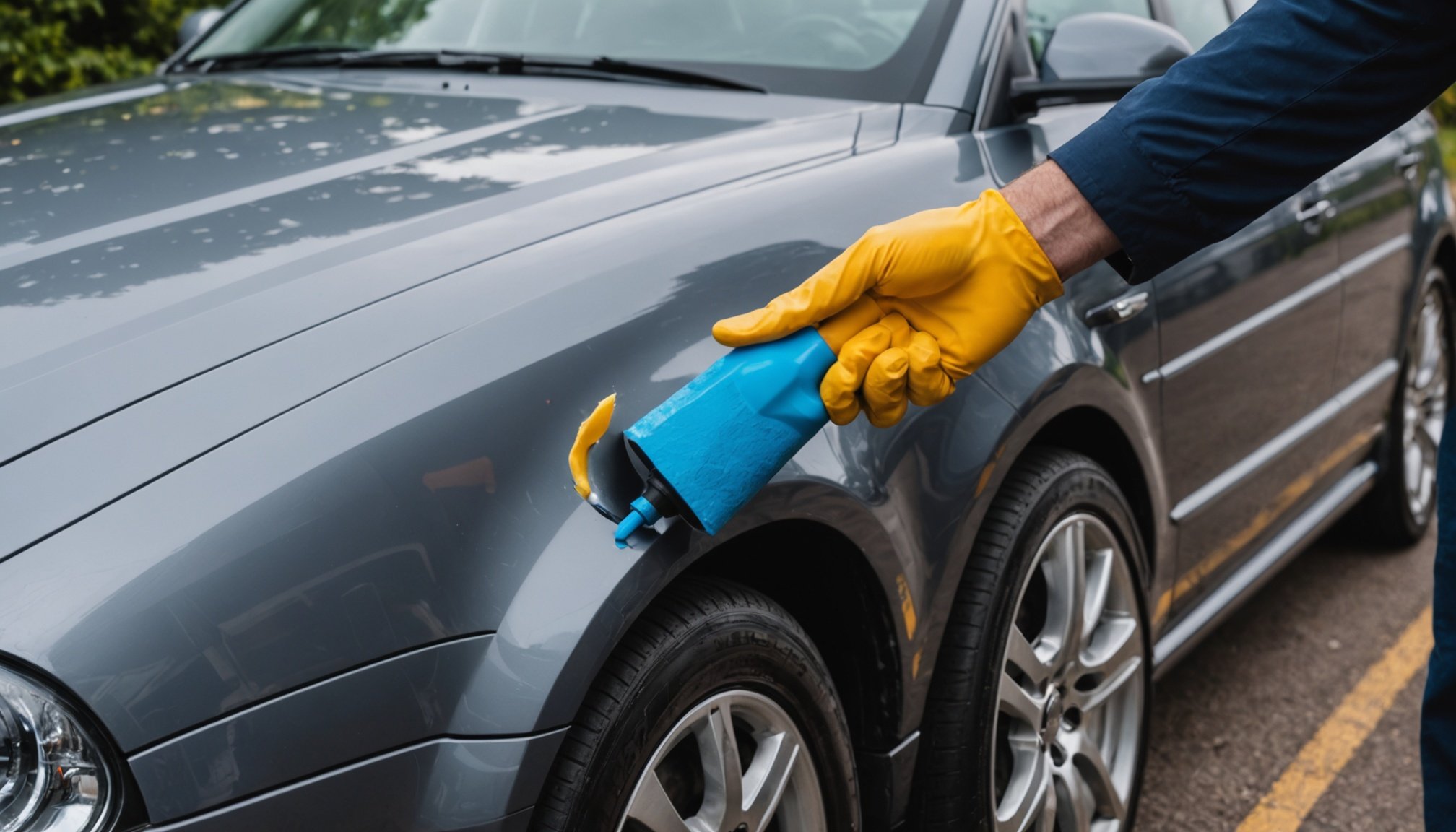In the bustling world of automotive care, the choice between waxes and sealants often poses a dilemma for car enthusiasts and everyday vehicle owners alike. The UK’s diverse climate—ranging from damp and dreary to occasionally sun-kissed—puts additional pressure on car paint protection measures. Understanding the key differences among these products can lead to better decisions, enhanced coating longevity, and, ultimately, a more vibrant vehicle appearance. Our guide explores the various types of waxes and sealants, the benefits each offers, and how they can be best applied to protect your car’s finish.
Understanding Waxes: Natural vs. Synthetic
Waxes have been a cornerstone of car paint protection for decades, renowned for their ability to provide a classic, glossy finish. These products come in two main varieties: natural waxes and synthetic waxes. Each type has unique properties, making them suitable for different needs.
Additional reading : What are the benefits of using UK vehicle headlight restoration kits?
Natural Waxes
Natural waxes, often made from carnauba, provide a deep, warm glow that is hard to replicate. This wax is typically harvested from the leaves of the carnauba palm in Brazil, and it’s prized for its high melting point and ability to create a rich, glossy sheen. However, it requires more frequent application due to its shorter lifespan compared to synthetic alternatives.
Synthetic Waxes
In contrast, synthetic waxes are engineered to offer longer-lasting protection. These products incorporate polymers and other chemical compounds that bond with the paint surface, creating a tougher barrier against environmental factors. While they might not deliver the same depth of shine as natural waxes, their durability makes them a popular choice among those seeking long-term paint protection.
Have you seen this : How can I identify high-quality UK vehicle parts and accessories?
Choosing the Best Wax
When selecting a wax for your vehicle, consider your priorities: if you desire a show-stopping shine and are willing to invest time in regular upkeep, a natural wax may be your best bet. Conversely, if you prioritize durability and ease of use, a synthetic wax is likely more suitable. Either way, consistent application is key to maintaining your vehicle’s exterior.
Exploring Sealants: Polymer and Ceramic Options
Sealants have emerged as a modern solution for long-lasting paint protection, offering advantages that many waxes cannot. They typically come in two forms: polymer sealants and ceramic coatings. Each presents distinct benefits and considerations for vehicle owners.
Polymer Sealants
Polymer sealants are crafted from synthetic compounds designed to form a robust, protective layer over your car’s paint. They offer excellent resistance against UV rays, harsh weather conditions, and contaminants like road salt and bird droppings. One of the standout features of polymer sealants is their ability to last several months, reducing the need for frequent re-application.
Ceramic Coatings
For those seeking the cutting edge in paint protection, ceramic coatings may be the answer. These advanced products use nanotechnology to provide an ultra-hard, transparent layer that bonds permanently with the paint. Ceramic coatings offer unprecedented durability, often lasting several years with minimal maintenance. They also enhance shine, hydrophobicity, and dirt repellency, making them a comprehensive solution for vehicle care.
Selecting the Ideal Sealant
When deciding between polymer sealants and ceramic coatings, consider your maintenance preferences and environmental conditions. Ceramic coatings require professional application and are more costly upfront, but their longevity and superior protection can be game-changers for those willing to invest. Polymer sealants, on the other hand, offer a more budget-friendly option with easier DIY application while still providing robust paint protection.
Weighing the Pros and Cons: Wax vs. Sealant
The choice between waxes and sealants is not merely a matter of preference; it’s about meeting specific needs for your vehicle’s coating. Each option presents its own set of advantages and potential drawbacks, making it essential to weigh them carefully.
Advantages of Waxes
- Aesthetic Appeal: Natural waxes offer an unrivaled, deep gloss that enhances the vehicle’s appearance.
- Ease of Use: Both natural and synthetic waxes are typically straightforward to apply, making them accessible for DIY enthusiasts.
- Flexibility: They can be layered over sealants for added shine.
Drawbacks of Waxes
- Longevity: Waxes generally require more frequent re-application compared to sealants.
- Vulnerability: They don’t provide the same level of protection against environmental aggressors.
Perks of Sealants
- Durability: Sealants, particularly ceramic coatings, can last significantly longer, offering prolonged paint protection.
- Resilience: They provide a tougher barrier against UV rays, chemicals, and minor abrasions.
Limitations of Sealants
- Cost: High-end sealants, like ceramic coatings, can be more expensive initially.
- Complexity: Some sealants require professional application, which adds to the overall cost.
Making an Informed Decision
In choosing between waxes and sealants, consider the following questions: How much time are you willing to invest in paint protection? Are you seeking a showroom shine or long-term durability? By addressing these questions, you can determine which product aligns with your maintenance routine and aesthetic goals.
Application Techniques: Ensuring Optimal Results
Regardless of whether you choose waxes or sealants, proper application techniques are essential to achieving the best results. Both types of products have unique application methods that can enhance their effectiveness and lifespan.
Applying Wax
- Preparation: Begin by thoroughly cleaning your vehicle to remove any dirt or debris.
- Polish: If necessary, use a polish to smooth out the paint surface, enhancing the wax’s adhesion.
- Application: Apply the wax in thin, even layers using a clean, microfiber cloth or foam applicator.
- Buffing: Allow the wax to haze over before buffing it off with a clean, dry cloth to reveal a brilliant shine.
Applying Sealant
- Preparation: Similar to wax, start with a clean vehicle surface.
- **Choosing the Right Product: Select between a spray or liquid sealant based on your experience and ease of use.
- Application: Apply the sealant in sections, ensuring complete coverage.
- Curing: Allow the sealant to cure for the recommended time, often a few hours, to maximize its protective qualities.
Final Thoughts
Mastering the application process can significantly influence the performance of your chosen product. Taking the time to prepare the surface and follow the correct application steps will ensure that your car remains protected and visually appealing for months to come.
Ultimately, the decision between waxes and sealants hinges on understanding your vehicle’s needs and your maintenance preferences. Each product offers distinct benefits, from the classic glow of natural waxes to the enduring resilience of ceramic coatings. In the diverse UK climate, where environmental factors can easily mar a vehicle’s finish, selecting the right paint protection method becomes paramount.
By educating yourselves with the insights shared in this article, you can confidently choose the best products to ensure your car remains in pristine condition. Whether you’re an automotive aficionado or a casual driver, the right choice will enhance your vehicle’s aesthetic appeal and longevity, making every drive a testament to outstanding care and attention.











